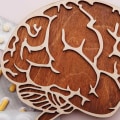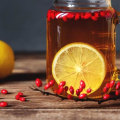Nonalcoholic fatty liver disease (NAFLD) is considered a critical hepatic manifestation of metabolic syndrome.
Berberine
(BBR) exerts antihyperglycemic and antidyslipidemic effects and may also improve NAFLD. Therefore, BBR could exert its therapeutic effect on NAFLD by improving glycolipid metabolism. Berberine reduces the expression of adipogenic enzymes and inflammatory molecules of the 3T3-L1 adipocyte.In conclusion, based on current evidence, berberine can significantly improve blood lipids and liver function in patients with NAFLD and has a good advantage in lowering blood glucose in patients with NAFLD, which could be a new option for the treatment of NAFLD. The objective of this study was to elucidate the protective effects of berberine on the intestinal mucosal barrier by regulating intestinal flora in rats with non-alcoholic fatty liver disease (NAFLD). This study aimed to evaluate the therapeutic effect of berberine in the treatment of NAFLD by meta-analysis in order to provide evidence for clinical decision. Berberine improves intestinal mucosal barrier dysfunction in rats with nonalcoholic fatty liver disease (NAFLD).
The present study established an animal model of NAFLD, observed changes in liver tissue by staining with hematoxylin and eosin (H&E), and analyzed biochemical markers to evaluate the effect of berberine on NAFLD. Subgroup analysis of studies on TG, AST and FBG indicates that the combination of berberine treatment can significantly reduce TG levels in patients with NAFLD, and research results on the combination of berberine treatment tend to the fact that berberine has the effect of reducing AST and the FBG, but at present, the results have considerable heterogeneity. Some plant medicines containing berberine (BBR) have been widely used for centuries in Ayurvedic and traditional Chinese medicine. Berberine, a natural plant product, activates AMP-activated protein kinase with beneficial metabolic effects in diabetic and insulin-resistant states.
The results showed that the effectiveness of reducing TC, LDL, ALT, 2hPG and HbA1c in patients with NAFLD in the berberine group was significantly higher than that of the control group. The search terms were NAFLD, nonalcoholic fatty liver disease, NASH, nonalcoholic steatohepatitis, fatty liver, fatty liver disease, randomized controlled trial, controlled clinical trial, berberine, BBR and huang lian su. Berberine reverses abnormal L-type pyruvate kinase expression through DNA demethylation and histone acetylation in the livers of rats with nonalcoholic fatty disease. The main search terms were combinations of “berberine” and “nonalcoholic fatty liver disease” or “nonalcoholic fatty liver disease” or “nonalcoholic fatty liver disease” or “NAFLD” or “nonalcoholic steatohepatitis” or “nonalcoholic steatohepatitis” or “nonalcoholic steatohepatitis” or “nonalcoholic steatohepatitis” or “NASH” or “metabolic associated”.
Fatty liver disease or “MAFLD” in several databases. Microarray Expression Profiles and Raman Spectroscopy Reveal Anti-Fatty Liver Action of Berberine in a Diet-Induced Zebrafish Larva Model. Berberine group combined with another drug group (experimental group) versus the corresponding drug group (control group).




